Most Influential Alive Fashion Designers Men Streetwear
The decade that stretches from 2010 to 2019 brought well-nigh some of the largest shifts in manner we've e'er seen, culminating in the full realization of concepts that had been ready in motility over previous years. Peradventure the greatest shift was the fact that streetwear and luxury manner finally co-mingled in ways that had never been accomplished before; within ten years, every luxury label was looking to create the next big sneaker silhouette while streetwear labels were graduating to the runway.
When the 2010s began, many fashion houses were barely concerned with menswear offerings. Instead, men were offered buzzy brands that upgraded tailoring, oft with youthful sportswear or blue neckband touches, attainable retooled heritage and designers with uncompromising visions, albeit visions that didn't make for advisable officewear. Still, from humble beginnings came the movements that somewhen unspooled the stiff confines of men's clothing.
Though the '00s saw some early dabbling, menswear's boundaries were too house to be full challenged. Consider New York's Cloak, an early on 2000s effort that was revelatory at the time (Tim Blanks described co-designer Alexandre Plokhov as an outsider in 2006), but now looks comparatively tame. These were the babe steps that guided menswear's growth; from the workwear nail of the late '00s/early '10s to early stabs at codifying what would become athleisure, this was the decade that shaped what menswear volition become in the ensuing years.
The below designers were key in subverting not merely menswear norms, but also transforming manufacture and cultural expectations as a whole. Though there is a lack of women and people of color, the style industry'south glass ceiling is finally showing some signs of giving style. As we look to the next decade, creatives like Kerby Jean-Raymond, Grace Wales-Bonner, Martine Rose, Yoon Ahn and Hed Mayner are only a scattering of the creatives upsetting the narrative of the by and large-white, primarily-European menswear business, as the global market makes fashion for creatives from across the world.

Rei Kawakubo
Rei Kawakubo, head of the COMME des GARÇONS empire, is straight and indirectly responsible for uncountable trends over the by decade. This was quantified when the many COMME des GARÇONS lines — including the menswear-axial HOMME PLUS, HOMME, Junya Watanabe MAN — were the discipline of a Metropolitan Museum retrospective in 2017, indicative of the label'southward decades spent upending industry standards. Similarly, COMME des GARÇONS' Nike collaborations were some of the decade's finest: cardinal drops include 2013'due south forward-looking BLACK COMME des GARÇONS Blazer Low and 2017'south VaporMax and Nike Douse High. Meanwhile, the company'southward Dover Street Market outposts, founded in 2004, continued to gear up the standard for department stores well into the next decade, with exclusive drops and experiences hosted alongside names that include Travis Scott's Astroworld, sacai, Chrome Hearts, Gucci, AWAKE NY and Vetements.
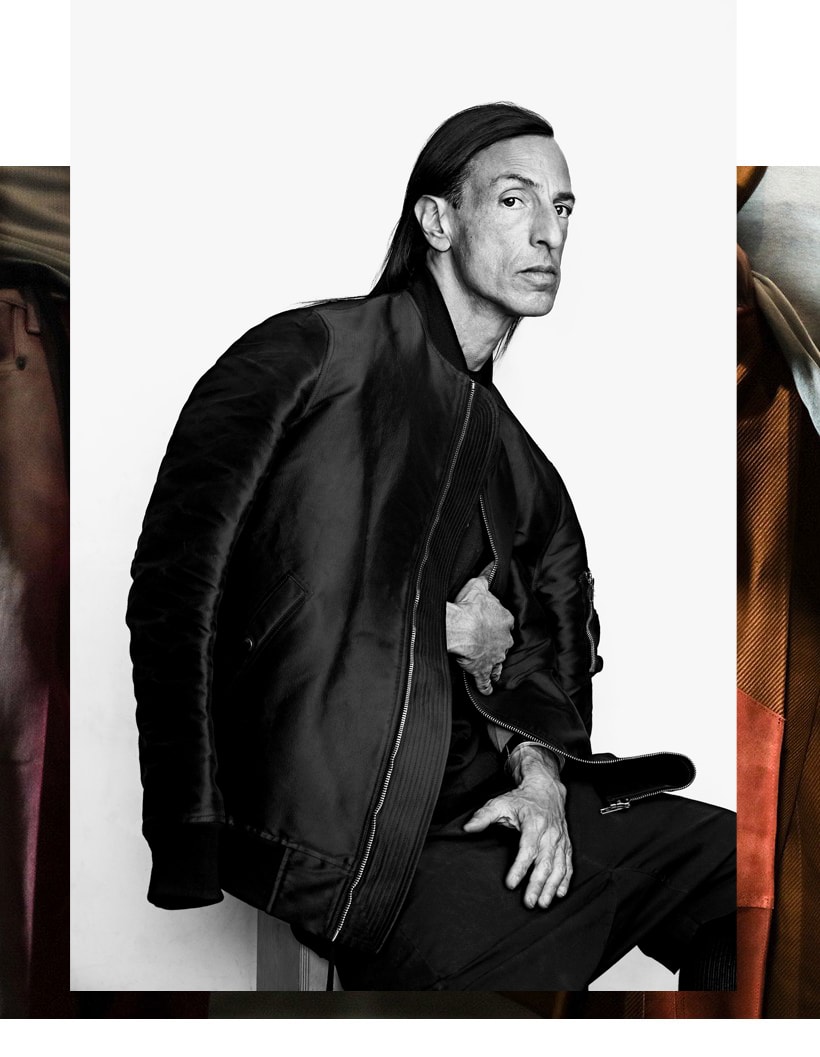
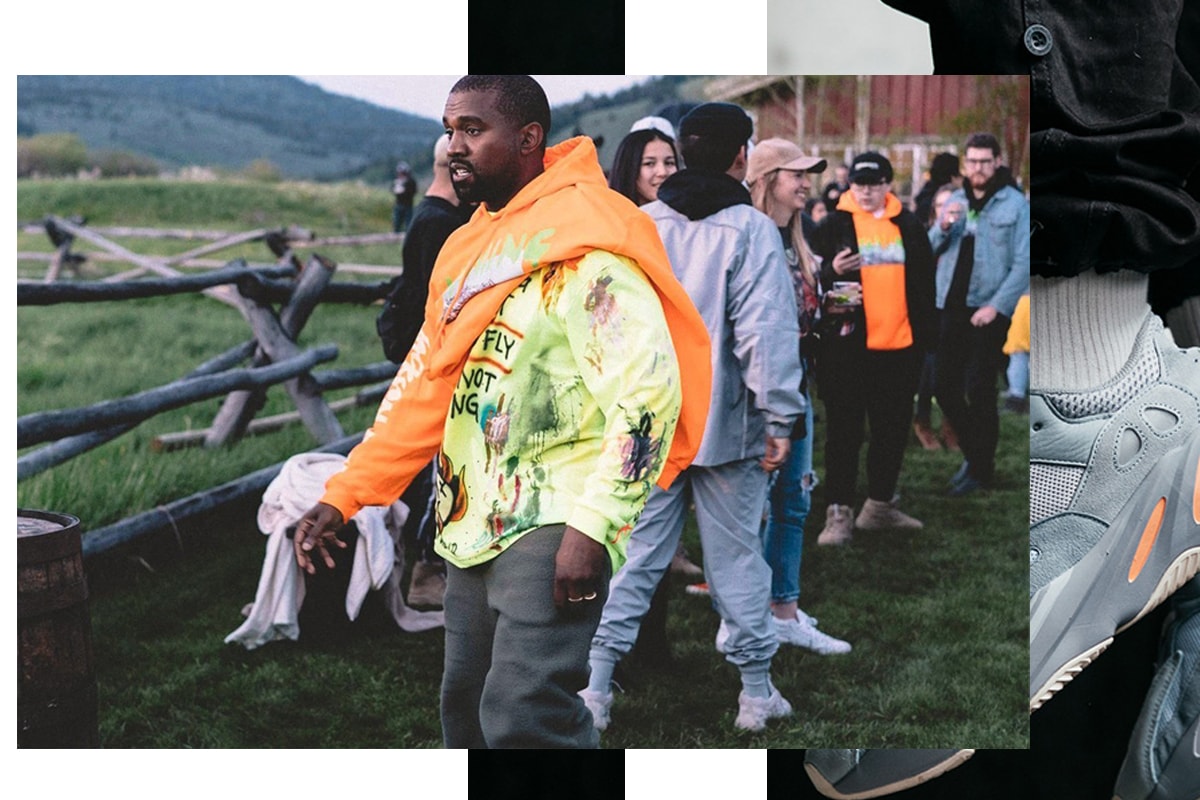
Kanye West
Lilliputian could be said about Kanye West that hasn't already been explored (even past West himself). However, it's worth mentioning the undeniable influence the rapper and creative exerted over the fashion industry this decade, Since his early dabbling in fashion (a Fendi internship in 2009, BAPE collaborations), West has adult his personal taste through several stages, from Riccardo Tisci's fine art direction in 2011, to 2013's Maison Martin Margiela-designed masks to the APC collaboration line in 2014 — the beginning official W-branded garments. W's Nike collaborations were also an early stab at quantifying his taste, but 2015 saw the Grand.O.O.D. Music founder effectively finding himself through his adidas partnership, when YEEZY Season 1 debuted. The muted world tones that informed the sweatpants, slouchy hoodies and shearling jackets substantially ready the tone for the residuum of West's decade, as he continued to produce enormously boxy T-shirts, baggy sweaters and those ever-evolving YEEZY's throughout the '10s, aiming to fulfill his promise of YEEZY sneakers for anybody.
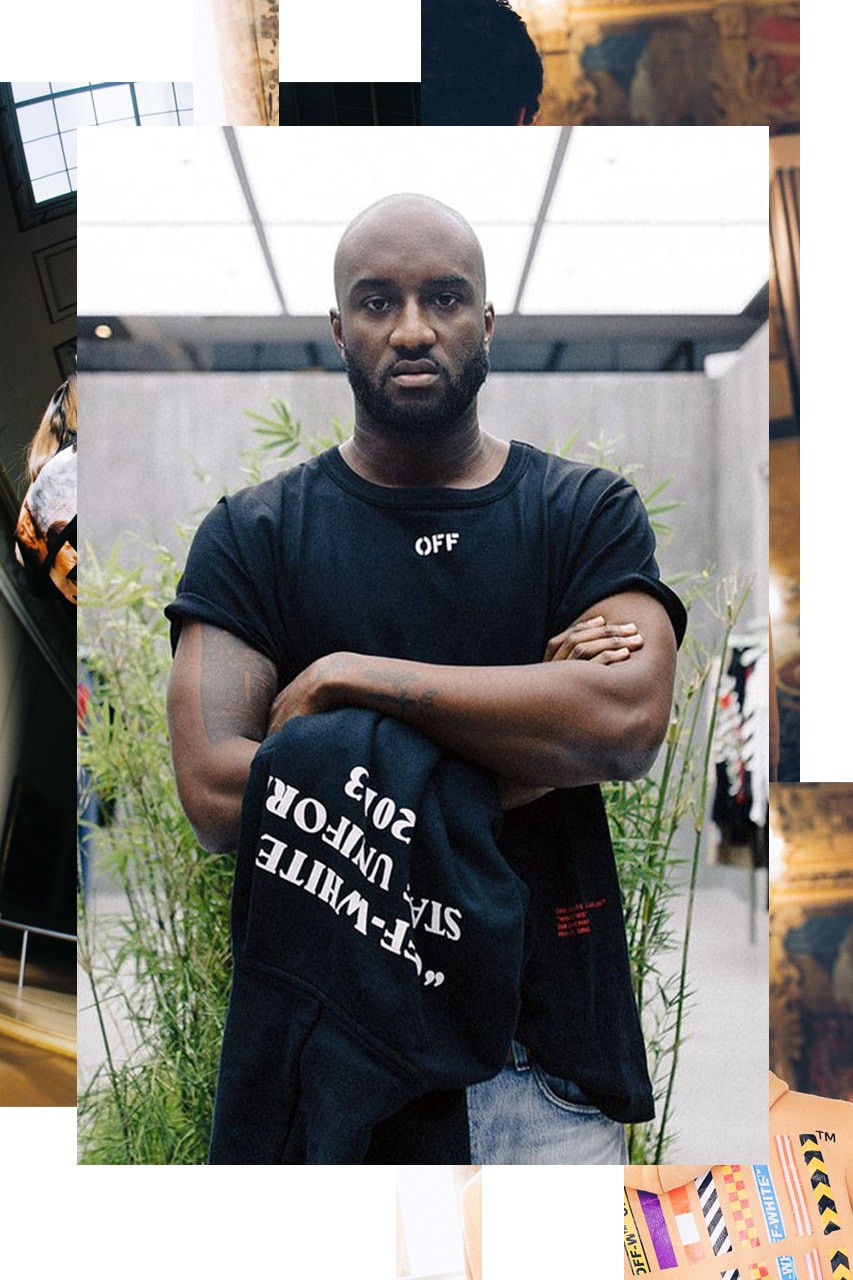
Virgil Abloh
Though Kim Jones at Louis Vuitton was responsible for what may exist the defining standoff of the luxury and streetwear industries, Virgil Abloh is the homo who gave Louis Vuitton the streetwear edge it needed to draw in an ever-younger clientele. Abloh'due south transformation of the luxury house capped an indescribably successful decade, which saw the creative fine art launch his offset clothing label, Pyrex Vision, in 2012, a year after he art-directed Kanye West and JAY-Z'due south Spotter the Throne. The explosive financial success of Pyrex Vision helped Abloh kickstart Fair™ in 2013, which became an LVMH prize finalist in 2015. Ii years afterward, Abloh had collaborated with everyone from Takashi Murakami to Nike, paving the manner for him to succeed his mentor, Jones, at Louis Vuitton the following twelvemonth. Even still, this brief bio is unable to properly quantify the impact that Abloh and his peers imparted upon the global style industry, a movement led by a would-be civil engineer who elevated streetwear to a fine fine art and made luxury palatable to the youth.

Miuccia Prada
Prada has consistently stayed ahead of the curve over the years, but the '10s provided a proper demonstration of Miuccia Prada's impressive premonition. For instance, the designer predated hybrid footwear trends with 2011's sandwiched derbies and delivered minimalist athletic-inspired wear for 2013 (far before anyone ever uttered the phrase "athleisure") as her menswear evolved from subversive suiting to informal workwear, floral shirting and patterned sweaters years before business casual became de rigueur. The Cloudbust, which get-go appeared in 2017, was indicative of Prada'south clairvoyance, a clunky technical runner that predated most trendy technical designs to market. Prada even beat out the tardily '10s' amour with logomania by way of bluecoat-branded accessories, eventually paving the way for a reissue of the '90s near progressive technical luxury lines: the nylon-centric Linea Rossa drove.
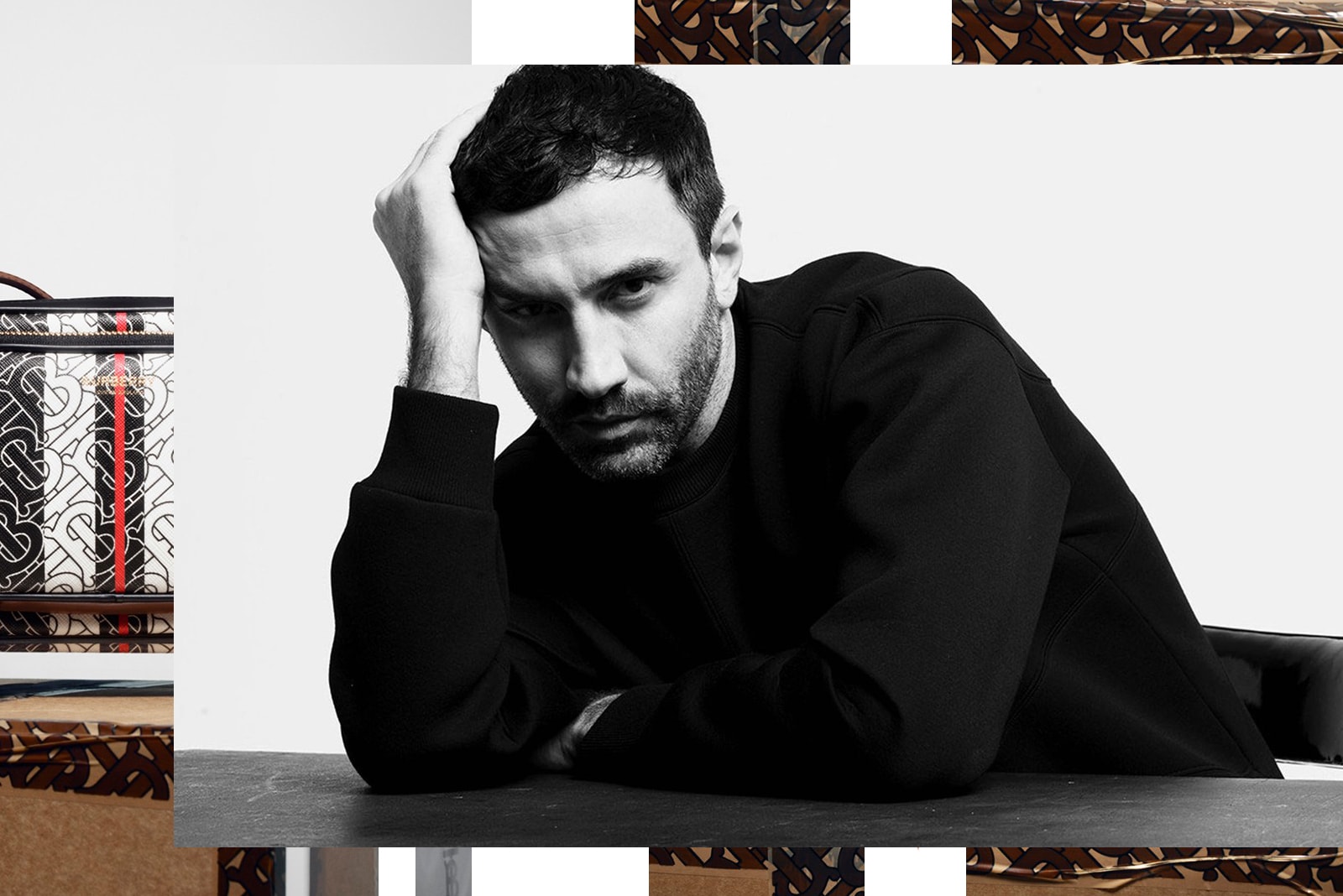
Riccardo Tisci
Though Riccardo Tisci finished the decade on a high note, taking a bow for his revitalization efforts at Burberry, perhaps the finest moments in the decade came during his tenure at Givenchy. After 12 years with the French house, Tisci left Givenchy in 2017, but not before providing some of the showtime fundamental instances of streetwear'due south influence on the luxury market. Tisci's famed creature graphics, star-branded hoodies and basketball-inspired shorts were indicative of the designer's beloved of sportswear, which won over various fans — including longtime pal Kanye West, who tapped Tisci to design outfits and artwork for Lookout man the Throne, W and JAY-Z's collaborative 2011 album. Tisci's street-inspired styling was the antecedent for today'south interconnected world, blending high mode and street savvy in ways that no other luxury house had previously dared effort.
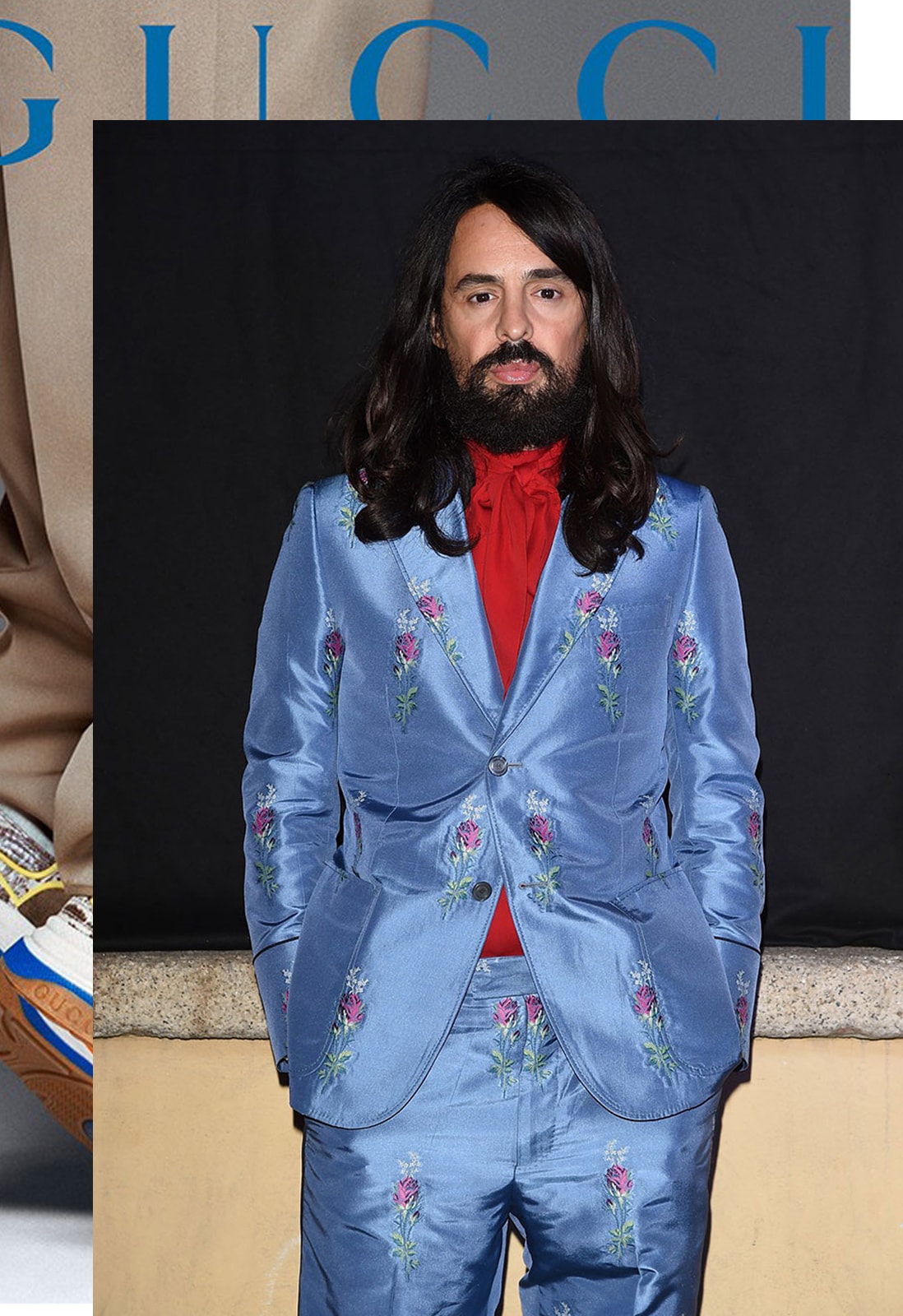
Alessandro Michele
In January 2015, Gucci took a run a risk on the then-unknown Alessandro Michele, who had designed the house's bags since his appointment under Tom Ford in 2002, elevating Michele to Gucci's artistic director in charge of every fashion collection and the entire brand'due south image. The option was fortuitous — Michele has smashed sales expectations twelvemonth-on-year, with the brand's fortunes rising 50% in 2017, and then another 45% a year later, cheers to overwhelming consumer need driven past the Italian designer's whimsical, romantic worldview. Gucci'south clothing — especially branded T-shirts and sweaters — reigns supreme, with plenty of branded goods that were crucial in developing the "logomania" trend. Regardless of shifting tastes, in that location's enough of demand for the brand'due south accessories, similar belts and sneakers, which serve as an accessible entryway to Michele'due south sumptuous world.

Hedi Slimane
Love him or detest him, Hedi Slimane is both a lightning rod for criticism and an uber-successful menswear designer, with legions of men flocking to each brand he reshapes in his epitome. After a stint at Dior Homme, Slimane kicked off an immensely influential tenure at Yves Saint Laurent, which he chop-chop rechristened Saint Laurent Paris to reverberate the new direction he was taking the brand. The shift yielded slim double rider'due south jackets, tight suits, skinny jeans and pointed boots inspired by the wardrobes of Mick Jagger and The Beatles, with womenswear playing second fiddle to the ever-popular menswear, which remained covetable even subsequently Slimane's departure. In 2018, Slimane was named manager of Céline — which he quickly renamed CELINE. Thus began his revision of a cult favorite label, wherein CELINE contradistinct grade from Phoebe Philo'due south minimalist womenswear to Slimane'south slim-fitting rockstar wardrobe, which drew enough attending that Slimane addressed the critics directly. He did demonstrate growth with recent collections, nonetheless, with contempo collections shifting from his oftentimes-imitated atypical vision of skinny garments to include some (slightly) looser cuts.
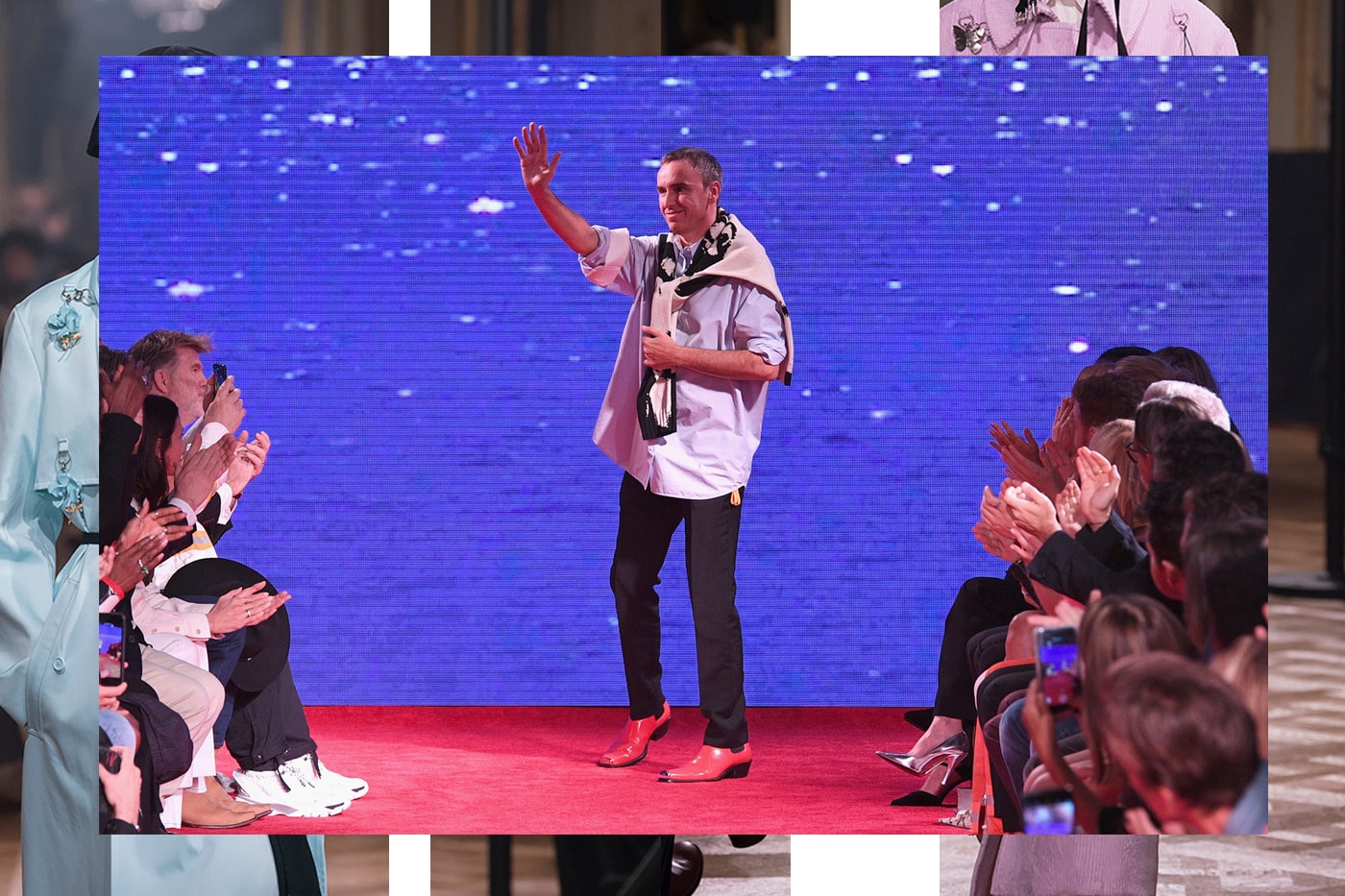
Raf Simons
Some may argue that Raf Simons' celebrity days are backside us, pointing to the Belgian designer's acclaimed Jil Sander collections, along with his own collectible garments from years past. However, Simons and his correct hand man, Pieter Mulier, left an enduring marking on the '10s with his well-documented Dior designs (he departed in 2015), boundary-destroying adidas collaborations, trend-setting in-firm collections and brief partnership with Calvin Klein, as famous for its bold designs as its explosive end. Regardless of the highs and lows, Simons' work for Klein, like his forward-thinking clunky adidas kicks, demonstrated his knack for kickstarting trends; his subversive spin on Americana at Klein predated the "Yeehaw Agenda," and the bulky adidas Ozweegos he beginning showed on the runway in 2012 were some of the first designer dad shoes on the contemporary marketplace.
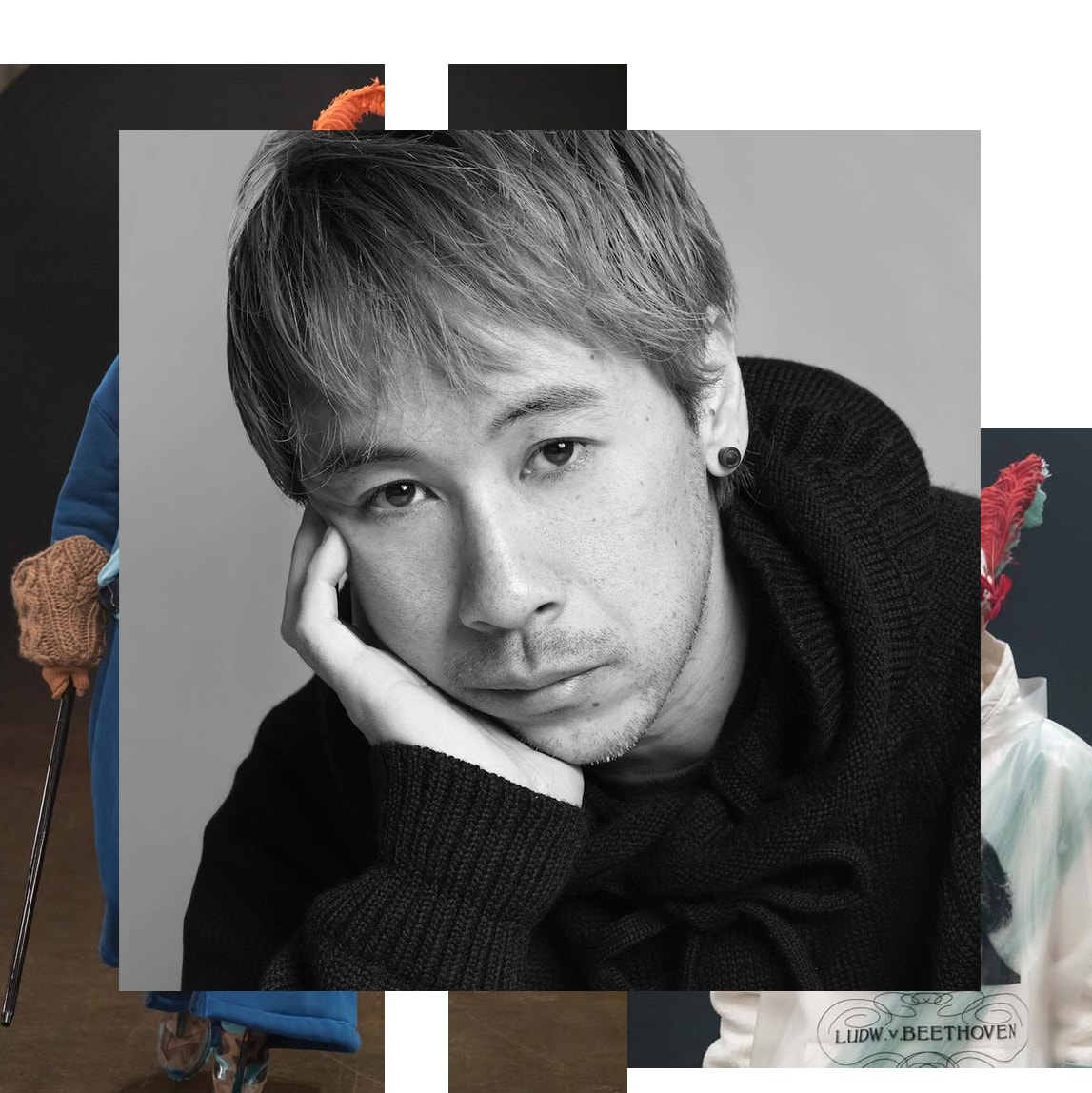
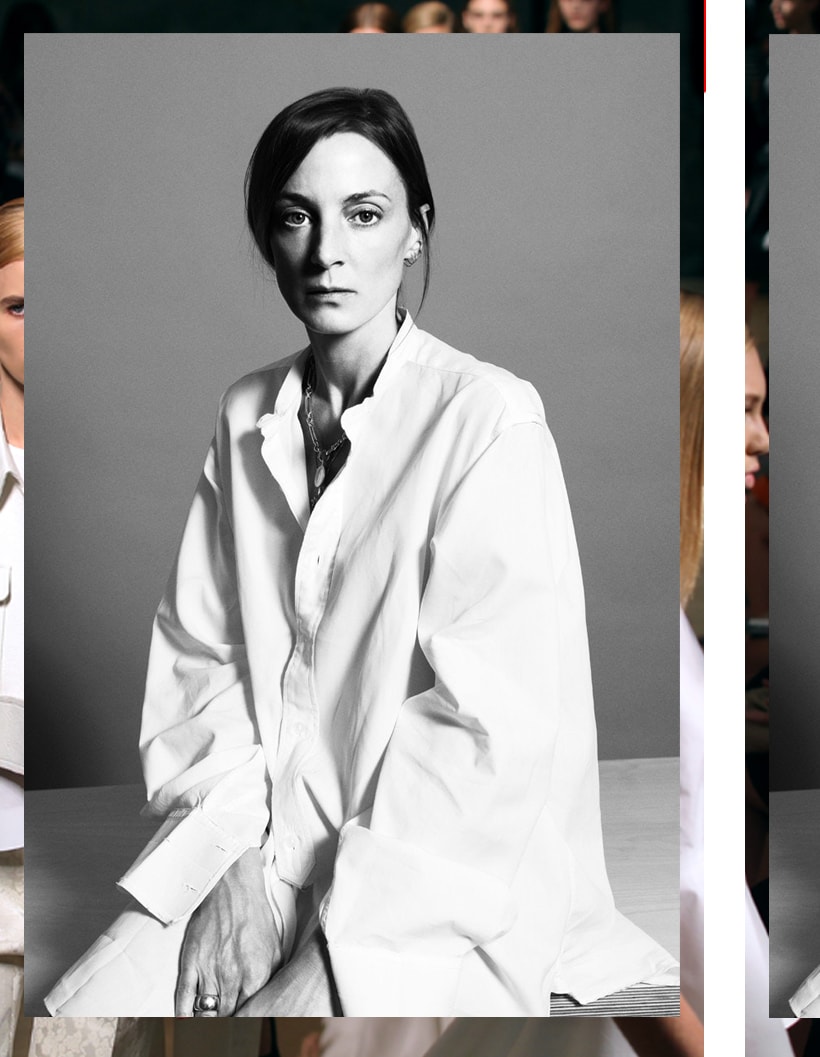
Phoebe Philo
Over the course of her decade at Céline, Phoebe Philo became a beacon for women seeking sophisticated, intelligent habiliment that filtered Philo'due south worldly influences through an approachably understated lens. Not to say that Philo avoided color or graphics — consider the graffiti-inspired Spring '14 patterns and rich, warm hues of Pre-Fall '16 — but when she elected to include statement pieces into the seasonal ranges, they were given the Philo touch on, applied to sculptural silhouette-altering garments similar long tunics, nipped blazers and billowing skirts, subverting minimalism with playful snakeskin patterns and delicate fringing. Still, Philo's force was providing a trend-free alternative to manner's endless demand for newness, perhaps best exemplified by the refined Pre-Autumn '13 and Resort '14 lookbooks, or perhaps her all-inclusive Spring '17 offer. Throughout the '10s, Philo delivered daringly understated designs and clever layers that won many disquisitional accolades and loftier street imitations, making her nomadic departure from Céline in 2018 that much more noteworthy.
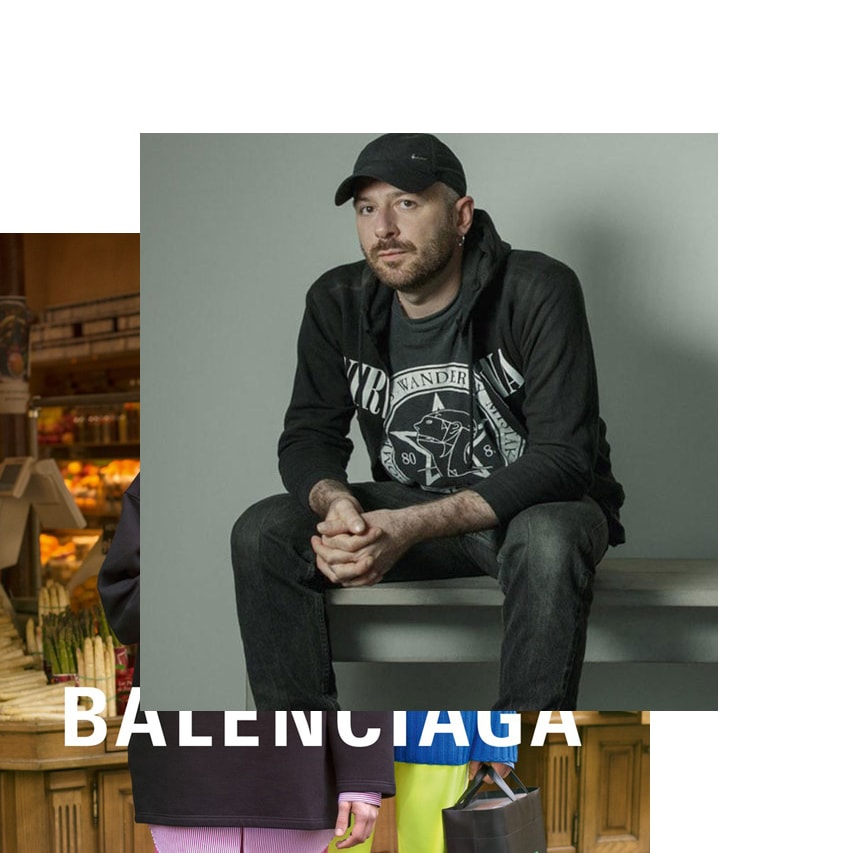
Demna Gvasalia
Demna Gvasalia didn't really brainstorm breaking headlines until 2015, halfway through the decade. Still, by the time he became a force of nature within the industry, the decade feels similar it belonged to him. His output at Vetements and and then Balenciaga shaped trends that didn't exist until Gvasalia's Lotta Volkova-styled runways upset the establishment. He initially (inadvertently) redefined the phrase "normcore," which had substantially died-out after it was coined in 2013, but his garments eventually expanded beyond subtly shifted shirts and baggy blazers to full-bore logomania, before reverting to minimalist-adjacent designs. Vetements' purlieus-busting collaborations with labels as diverse as Levi's, COMME des GARÇONS SHIRT, Juicy Couture, Manolo Blahnik and Kawasaki established Gvasalia's former make (he departed in 2019) as an unmatched tastemaker, perfecting the art of the streetwear-style collaboration. And then there's Balenciaga's Triple South sneaker; few other shoes in the past decade were comparably prescient, similarly impactful or imposingly huge. Notwithstanding, in its wake, everyone from other luxury houses to huge footwear companies were left scrambling to ape the behemothic footwear stylings Gvasalia made absurd.


0 Response to "Most Influential Alive Fashion Designers Men Streetwear"
Post a Comment